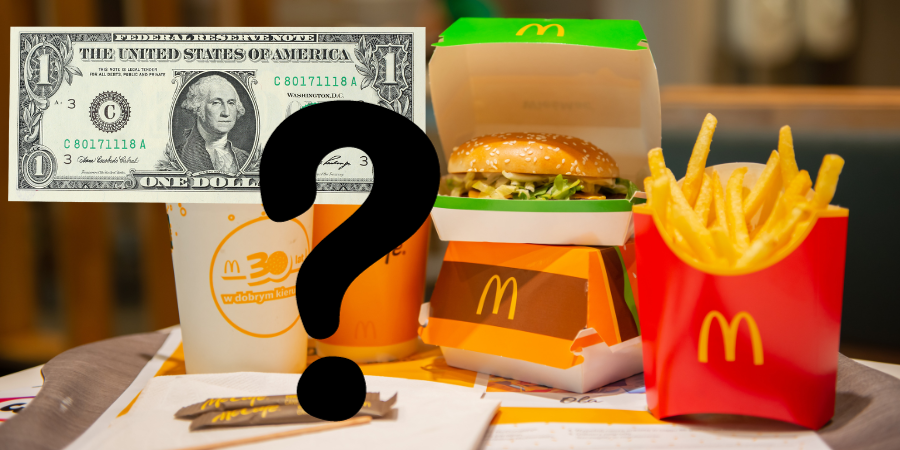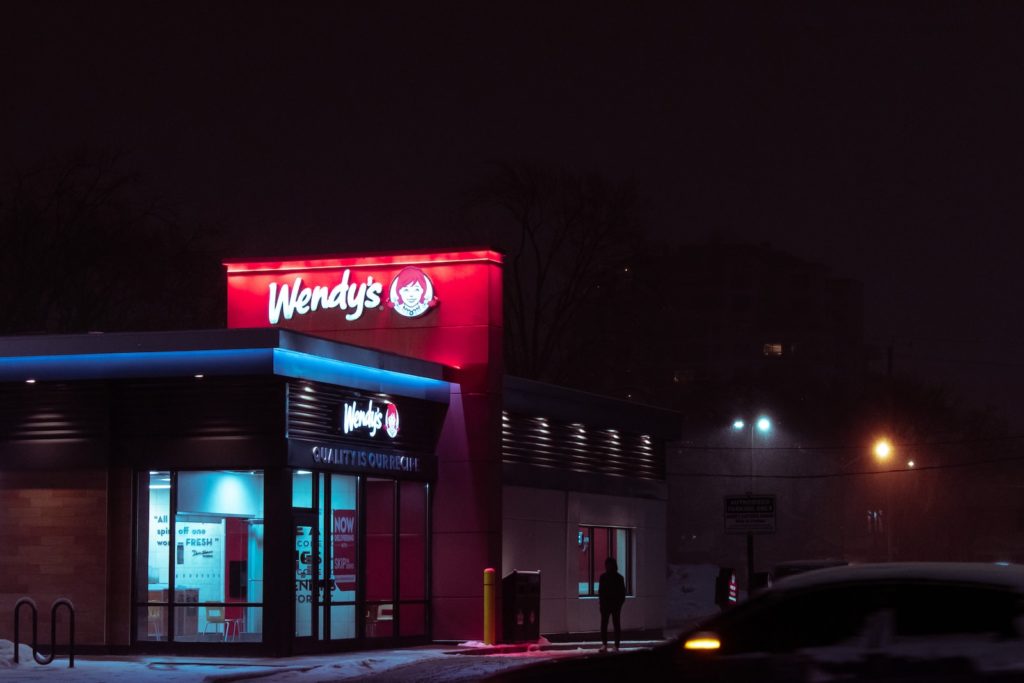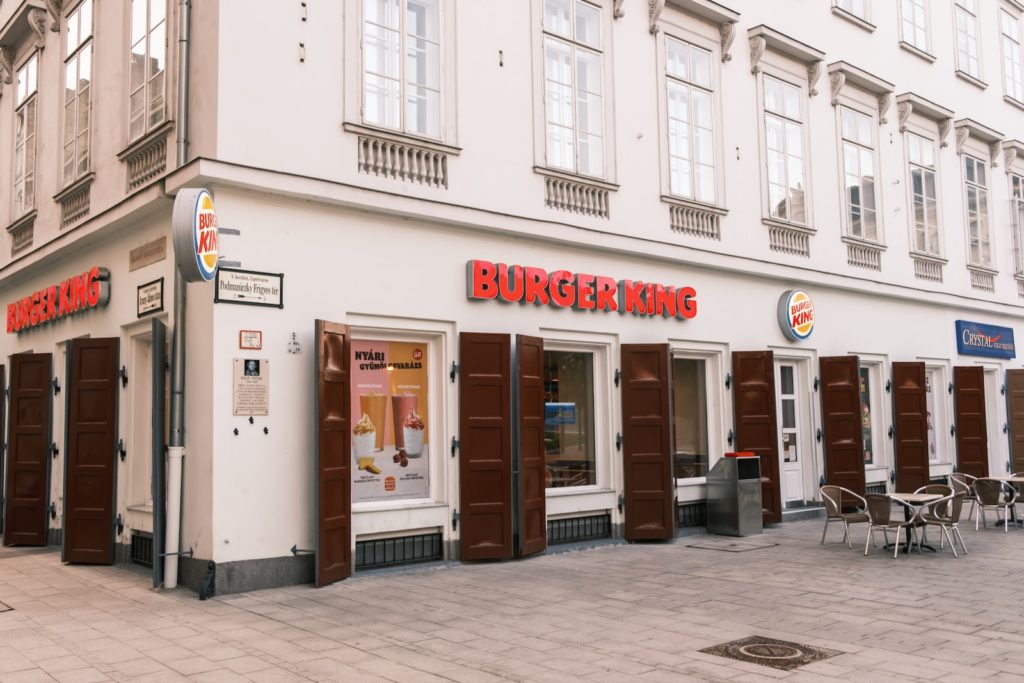
Remember the days when you could get a full meal for just one dollar at your favorite fast food restaurant? That’s right. We’re talking about the golden era of where did the dollar menu go. It was like finding buried treasure in our pockets every time we stepped into these eateries.
But then one day, just as quickly as they had appeared, those precious $1 deals started to vanish. Suddenly, our treasured maps led us not to bountiful burgers and budget-friendly bites but instead to confusion and questions.
This is your guide through the intriguing saga! It’s a tale of cutthroat rivalry between fast-food titans, shifts in customer cravings sparked by social media buzz, and hurdles that led to the downfall of our cherished dollar menus. By the time we wrap up, you’ll understand perfectly why these delicious bargains have turned into food folklore.
Table of Contents:
- The Rise and Fall of the Dollar Menu
- Competition Among Fast Food Chains
- The Social Media Impact on the Dollar Menu
- Challenges Leading to the Demise of the Dollar Menu
- FAQs in Relation to Where Did the Dollar Menu Go
- Conclusion
The Rise and Fall of the Dollar Menu
There’s no denying that fast food chains, especially McDonald’s, have shaped our dining habits. One significant innovation was the dollar menu.
In 2002, McDonald’s introduced this game-changing concept offering items like the McChicken and the McValue fries for just $1. However, it wasn’t without its downsides as customers ended up spending less money with each visit—about $0.03 less on average.
McDonald’s Dollar Menu Evolution
The introduction of the dollar menu proved a hit initially but raised some sustainability concerns among franchise owners who saw their profit margins dwindling.
This tension led to unapproved price hikes in some cases—a double cheeseburger suddenly cost more than a buck. To keep things under control while trying to balance profitability and affordability became an ongoing struggle for McDonald’s leadership.
The company made several attempts at tweaking their value offerings over time such as introducing ‘Dollar Menu & More’ and ‘McPick 2’. Despite these efforts though, customer backlash against rising prices continued leading ultimately to phasing out of the original dollar menu concept altogether by most major chains including McDonald’s itself in recent years.
Impact on Fast Food Industry
Beyond just McDonald’s however other major players also jumped into the fray which drastically reshaped industry trends. Wendy’s took charge with their Super Value Meal back in 1989—a full thirteen years before Micky D’s followed suit.
Wendy’s Super Value Meal, featuring nine different items priced at $.99 each, was an early innovator in the value menu space.
Burger King wasn’t far behind either launching their own 99-cent Great Tastes Menu in 1998. The fast food industry was forever changed as these heavy hitters sparred with one another over price points and product offerings.
But if we jump to the present day, it’s obvious that even with its early success, the dollar menu
McDonald’s groundbreaking dollar menu, launched in 2002, revolutionized the fast food industry. While it initially drew more customers, franchise owners began to worry as profit margins dipped. Despite attempts to revamp with ‘Dollar Menu & More’ and ‘McPick 2’, this concept eventually faded among major players.
Competition Among Fast Food Chains
The fast food landscape has always been a battleground, with major players like McDonald’s, Wendy’s, and Burger King continuously striving to lure in customers. One of the most memorable tactics was the introduction of value menus, specifically the dollar menu.

Wendy’s Super Value Meal
In 1989, Wendy’s decided to make its move. They launched their Super Value Meal featuring nine different items priced at $0.99 each – a groundbreaking idea that shook up industry norms.
This strategy wasn’t just about giving more for less; it also offered an enticing variety within reach of many budgets. Customers now had the chance to try out different foods without breaking their bank account or limiting themselves due to price constraints.
Imagine being able to order chili-topped baked potatoes alongside your cheeseburger. It felt like you were dining at a buffet but only paying fast-food prices. This move set off ripples across other chains as they scrambled to keep pace with Wendy’s success story.

Burger King’s 99-cent Great Tastes Menu
A few years later in 1998, another contender entered this ring: Burger King debuted its own version called the “99-cent Great Tastes menu.” But what made it unique? Well instead of offering staple items on discount like others did – think McChicken from McDonald’s Dollar Menu – they opted for premium options such as Whopper Junior and bacon cheeseburgers.
Burger King‘s strategy focused on quality over quantity. They reckoned that by giving patrons a chance to enjoy a touch of extravagance for just under one buck, it would build an emotional attachment and faithfulness towards the brand.
Think of it like hitting up your favorite shop when there’s a sale. You’re not just there for the bargain prices, but because you can get premium goods without spending a fortune. This strategy let Burger King shine among its rivals by dishing out what appeared to be
Big names in fast food, such as Wendy’s and Burger King, really stirred things up when they brought out value menus. Back in ’89, Wendy’s came out with a Super Value Meal – nine different items all for just 99 cents each. It was all about giving folks plenty of choices without making their wallets cry. Then along comes Burger King in ’98 with its “99-cent Great Tastes menu.” They decided to go another route by emphasizing top-notch options over having a ton of them.
The Social Media Impact on the Dollar Menu
As we turn back time to when fast food chains introduced dollar menus, it’s important to understand that this move was not only a game-changer in the industry but also sparked waves of reactions across social media platforms. With platforms like Twitter and Facebook gaining momentum during these times, consumers started voicing their opinions more freely.
In fact, it wasn’t uncommon for customers to share their excitement about getting a burger or fries for just a buck. Fast food chains quickly realized they could use social media as an avenue to connect with customers directly and promote their dollar menu offerings.
Burger King, for instance, leveraged social media extensively. They launched campaigns promoting new additions to their value menu such as ’99-cent Great Tastes’. The campaign resulted in significant buzz online and drove foot traffic into stores.
How McDonald’s Leveraged Social Media
Social media became a critical platform where McDonald’s Dollar Menu flourished too. A perfect example is how McDonald’s effectively used Twitter hashtags related to its popular items like #mcchicken or #mcfries.
This led not only increased brand visibility but also created conversations around these value offerings among fans worldwide. Their smart use of hashtag trends made them one of the most talked-about brands on social networks during that period.
Digital Word-of-Mouth: Boon or Bane?
Yet, social media’s openness can be a two-sided blade. While positive feedback amplified through digital word-of-mouth was beneficial, negative experiences shared on these platforms posed challenges for fast food chains.
For example, when McDonald’s replaced its ‘Dollar Menu’ with ‘Dollar Menu & More’, many consumers voiced their disappointment online about price increases. This backlash led to several discussions and debates over value vs. cost in fast-food dining – ultimately impacting consumer perception of the brand.
Social Media as an Indicator
Social plays a key role that’s just too important to ignore.
Fast food chains like Burger King and McDonald’s used social media to generate buzz about their dollar menus, sparking excitement among consumers. Yet, this digital transparency also exposed them to customer criticisms over changes or price increases. So while social platforms can boost visibility and engagement for fast-food brands, they’re a double-edged sword that demands careful management.
Challenges Leading to the Demise of the Dollar Menu
The story of the dollar menu is one that reflects both market dynamics and changing consumer tastes. But what were the main factors behind its demise?
McDonald’s Value Meal Innovations
One significant factor was McDonald’s attempt to evolve their value offerings over time. In 2013, they tried something new: they transformed their beloved dollar menu into the “Dollar Menu & More”. This included items priced above $1.
This change didn’t sit well with customers who had come to love the affordability of a flat $1 price point. The backlash was swift and loud, prompting McDonald’s to rethink their strategy once again.
In response, McDonald’s introduced a promotion called McPick 2 where customers could choose two select items for just $5. However, this move also faced criticism from franchise owners due to slim profit margins on these discounted products.
Sustainability Concerns
Apart from customer sentiment and operational challenges at franchises level, another hurdle came in an unexpected form – sustainability concerns within supply chains causing cost increases.
Diving deeper into it,“The key problem facing most fast-food restaurants is simple: cheap food isn’t as cheap as it used to be,” says Aaron Allen, global restaurant consultant. A surge in commodity prices made it nearly impossible to maintain a profitable dollar menu. For instance, the price of beef soared more than 80% from 2002 to 2015.
The costs associated with maintaining high food quality standards also started pinching profits. This was coupled with the pressure to switch towards sustainable sourcing and animal welfare commitments, which added additional costs.
Such increases in operational costs meant that selling items for just $1 became unsustainable. In order to remain profitable, fast-food chains had no choice but to increase prices in lieu of sacrificing quality.
The dollar menu’s fade from fast food is a tale of evolving consumer tastes, operational challenges, and rising costs. McDonald’s faced backlash when they replaced the iconic $1 price point with higher-priced options. Additionally, sustainability issues led to cost increases in supply chains making selling items for just $1 unfeasible.
FAQs in Relation to Where Did the Dollar Menu Go
Why did they get rid of the Dollar Menu?
The dollar menu was phased out due to rising supply costs and slim profit margins. Fast food chains needed to balance value for customers with sustainable business practices.
Will The Dollar Menu ever come back?
A full-fledged return is unlikely, given economic factors.
Did McDonald’s bring back the Dollar Menu?
In 2018, McDonald’s re-introduced a variation called the “$1 $2 $3 Dollar Menu”, offering different items at these three price points.
When was the Dollar Menu discontinued?
The original dollar menu saw its end around 2014 when it morphed into “Dollar Menu & More” with higher-priced options included.
Conclusion
We’ve journeyed through the tale of where did the dollar menu go, and discovered how fast food giants like McDonald’s, Wendy’s and Burger King sparked a revolution with their value menus. Fast-food history isn’t simply about price tags or burger battles – it’s a saga filled with lessons on adaptability, customer satisfaction and business strategy. Although not a dollar, ghost kitchens have also tried to take advantage of cheap eats, but should generally be avoided if you don’t want a haunting experience.
